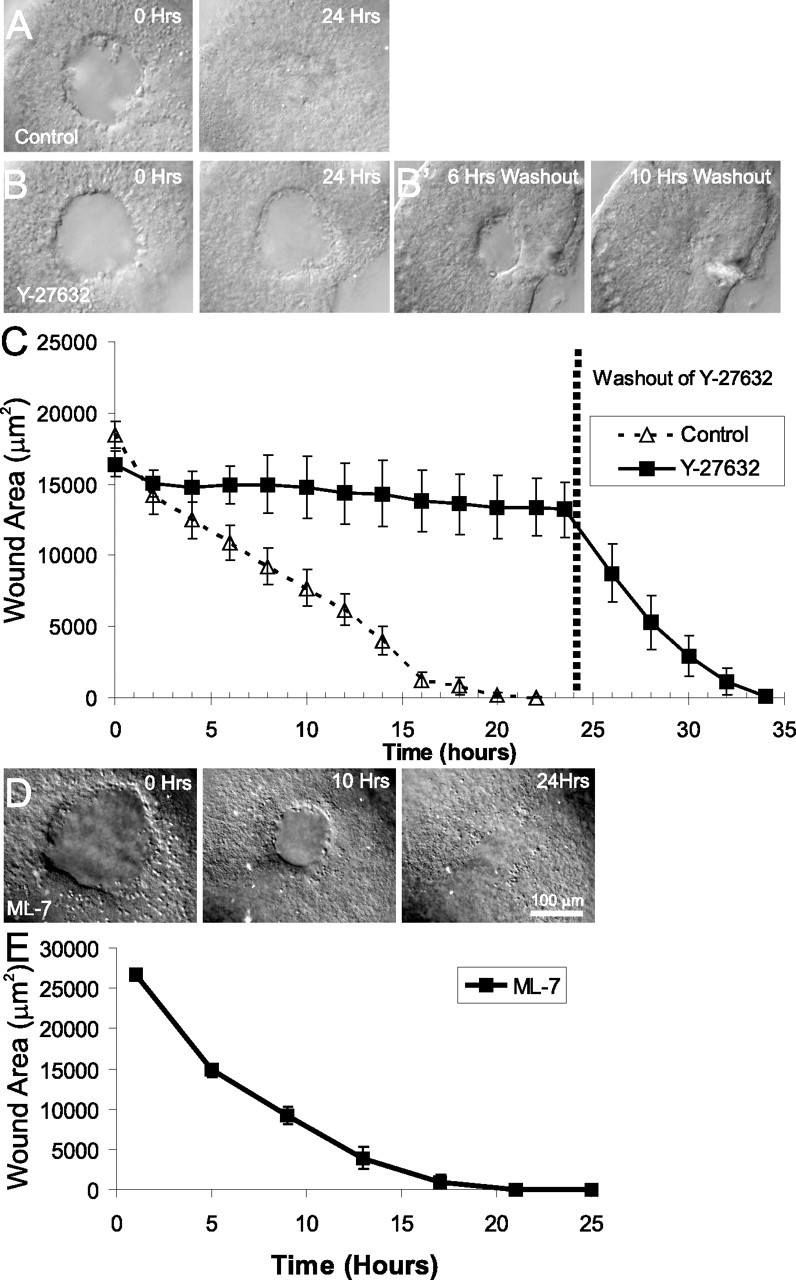Figure 6.

Closure of lesions in embryonic utricles requires activity of ROCK but not activity of MLCK. A, Individual frames from a time-lapse recording of closure of lesions in an E18 utricle cultured in control media. The lesion closes completely within 24 h. B, Individual frames from a time-lapse recording of closure of lesions in an E18 utricle cultured in the presence of 50 μm of the ROCK inhibitor Y-27632 for 24 h. Lesion healing is inhibited in the presence of Y-27632, although the lesion edge becomes smooth and round. Cyto D, Cytochalasin D. B', Frames from the time-lapse shown in B after washout of Y-27632 and replacement with control media. The effects of Y-27632 are completely reversible, with closure occurring within 10 h of washout. C, Quantification of closure of lesions from simultaneous time-lapse recordings from E18 utricles cultured in control media or media containing 50 μm Y-27632 for 24 h; mean ± SEM is plotted every 2 h. Although the control utricles healed normally and fully closed within 24 h, utricles cultured in Y-27632 showed little closure of lesions but healed rapidly after washout of the drug. D, Frames from a time-lapse recording of an E18 utricle cultured in 20 μm ML-7. The lesion rounds up and contracts normally, fully closing within 24 h. E, Quantification of closure of lesions from simultaneous time-lapse recordings of E18 utricles cultured in 20 μm ML-7 for 24 h; mean ± SEM are plotted every 4 h showing normal closure of the lesions.
